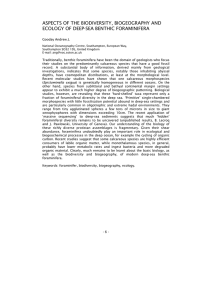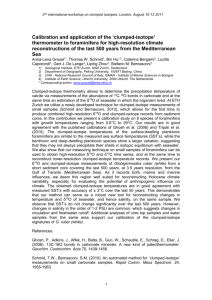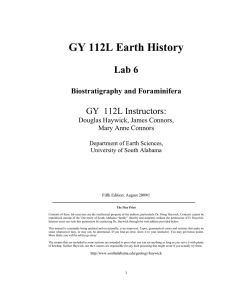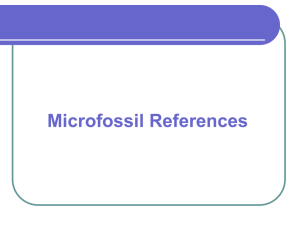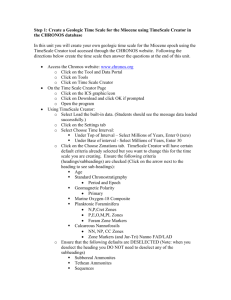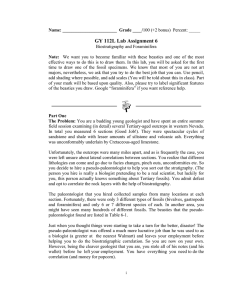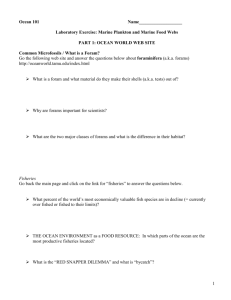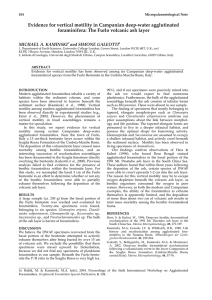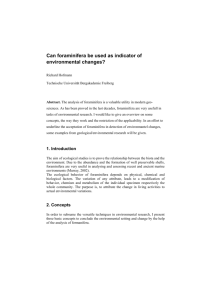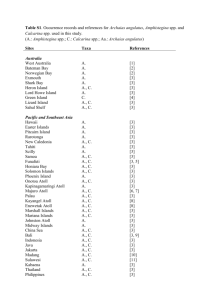Finding Ancient Beaches
advertisement
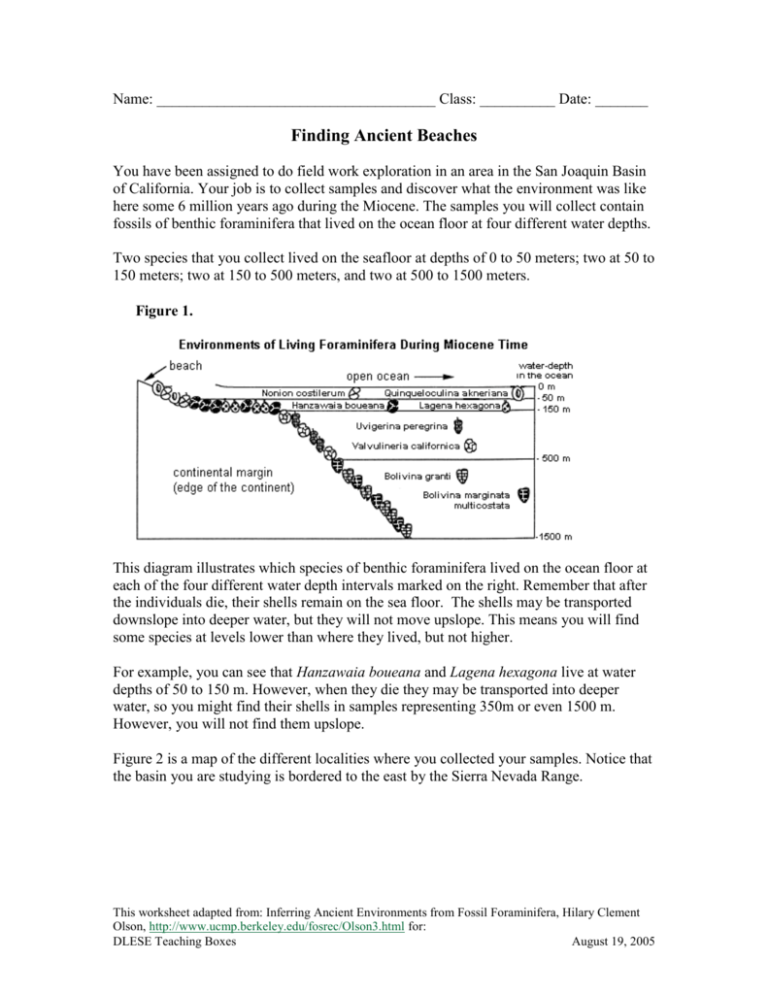
Name: _____________________________________ Class: __________ Date: _______ Finding Ancient Beaches You have been assigned to do field work exploration in an area in the San Joaquin Basin of California. Your job is to collect samples and discover what the environment was like here some 6 million years ago during the Miocene. The samples you will collect contain fossils of benthic foraminifera that lived on the ocean floor at four different water depths. Two species that you collect lived on the seafloor at depths of 0 to 50 meters; two at 50 to 150 meters; two at 150 to 500 meters, and two at 500 to 1500 meters. Figure 1. This diagram illustrates which species of benthic foraminifera lived on the ocean floor at each of the four different water depth intervals marked on the right. Remember that after the individuals die, their shells remain on the sea floor. The shells may be transported downslope into deeper water, but they will not move upslope. This means you will find some species at levels lower than where they lived, but not higher. For example, you can see that Hanzawaia boueana and Lagena hexagona live at water depths of 50 to 150 m. However, when they die they may be transported into deeper water, so you might find their shells in samples representing 350m or even 1500 m. However, you will not find them upslope. Figure 2 is a map of the different localities where you collected your samples. Notice that the basin you are studying is bordered to the east by the Sierra Nevada Range. This worksheet adapted from: Inferring Ancient Environments from Fossil Foraminifera, Hilary Clement Olson, http://www.ucmp.berkeley.edu/fosrec/Olson3.html for: DLESE Teaching Boxes August 19, 2005 Figure 2. This map shows where the various samples from Miocene rocks were taken from the San Joaquin Basin in California. All samples represent the same time in geologic history. After you collect 10 samples from Miocene rocks in the above region, you crush the samples, and separate microfossil material, specifically foraminifera, from the rock. You examine this fossil material and sediment under a microscope and the results of the various samples are shown in Figure 3. 1. Look at each of the samples and determine the depth at which those foraminifera lived. Refer back to the preferred environments shown in Figure 1. Record your findings in the blank below each sample. Sample 2 has been interpreted for you. 2. After you have determined the depth for each sample, mark the numbers on your map (Figure 2). Sample 2 has been done for you. 3. Based on this information, estimate where the beach was located in this area during Miocene. Using a colored pencil, highlight and label where the shoreline was 6 million years ago. 4. What do you think would cause the lack of foraminifera in Sample 9? Hint: Look on the map in Figure 2 and note where the sample was collected compared to the others. 5. Write a short description of what you think the general environment of this area was during Miocene time. This worksheet adapted from: Inferring Ancient Environments from Fossil Foraminifera, Hilary Clement Olson, http://www.ucmp.berkeley.edu/fosrec/Olson3.html for: DLESE Teaching Boxes August 19, 2005 Figure 3. This diagram shows which species of benthic foraminifera lived on the ocean floor at the four water-depth intervals marked at the right. Remember that after the foraminifera die they may be transported downslope into deeper water. This worksheet adapted from: Inferring Ancient Environments from Fossil Foraminifera, Hilary Clement Olson, http://www.ucmp.berkeley.edu/fosrec/Olson3.html for: DLESE Teaching Boxes August 19, 2005

